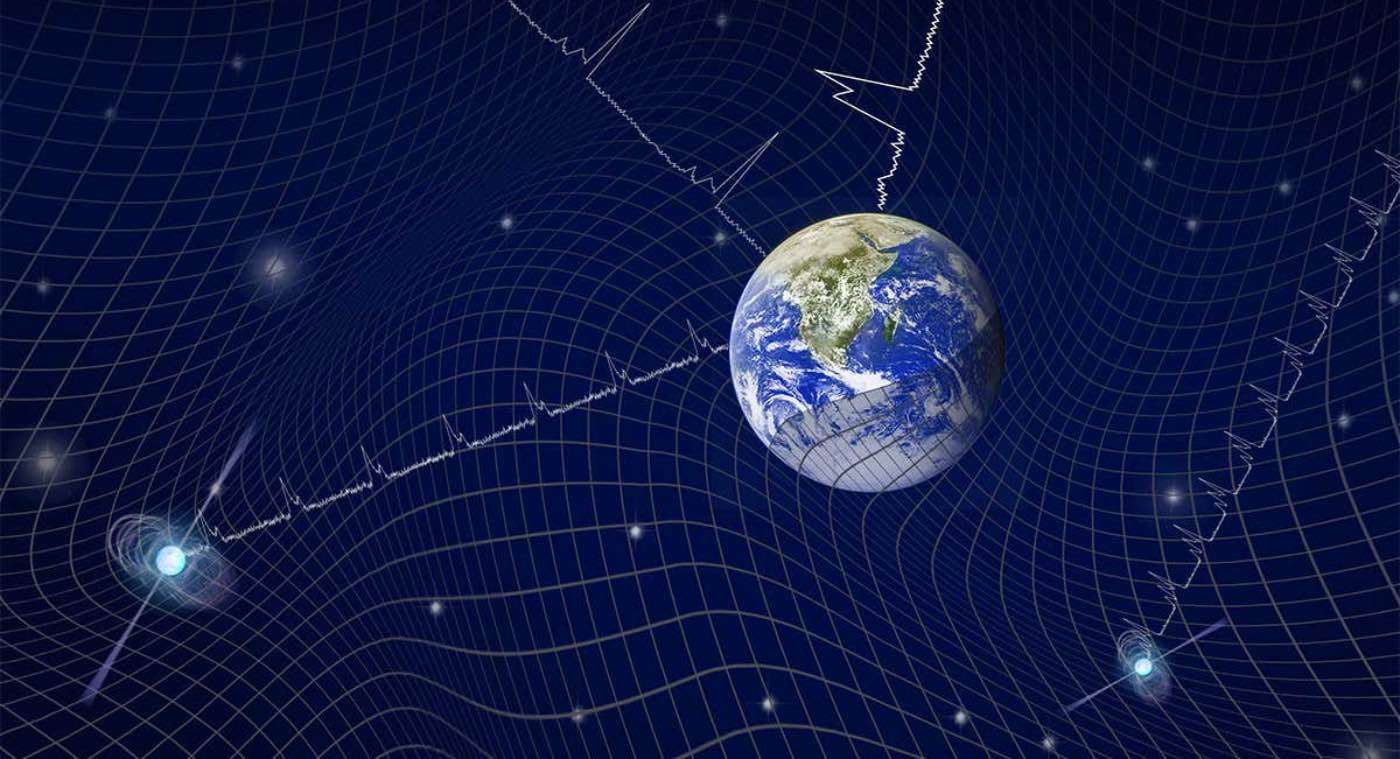The World's Oldest Known Cave Painting Has Been Discovered in Indonesia
On the Indonesia island of Sulawesi, the oldest known cave painting has been discovered, depicting a Sulawesi warty pig next to handprints.

Astrophysicists attempting to detect the presence of low-frequency gravitational waves are on to something, and it could be one of the biggest discoveries in the history of mankind.
By collaboration from one side of the Earth to the other, a signal has appeared in the data of a project that uses the rhythm of stars' movement to detect these truly gargantuan intergalactic waves, and the scientists think it may be proof of the gravitational wave background, a discovery more consequential than anything in recent history.
The researchers, hailing from the North American Nanohertz Observatory for Gravitational Waves (NANOGrav), are cautious, knowing that both the macro and micro aspects of their data could mislead them.
Their work has involved the constant monitoring of 45 pulsars over a period of 12 years. Pulsars are super-dense stars that spin at incredibly fast speeds, generating a continual stream of light, radiation, and even sound.
Being that they are trying to measure one of the largest forces in the universe, the pulsars work to expand the scientists' monitoring equipment to large stretches of the Milky Way galaxy, rather than just a laboratory in Colorado.
Their recent paper revealed that the continual spinning of the pulsars seemed to be interrupted for a few nanoseconds in a way that was replicated on each one of the 45 stars, exactly the kind of effect that low-frequency, universe-traveling gravitational waves would have.
"It is incredibly exciting to see such a strong signal emerge from the data," said Joseph Simon from the University of Colorado, who led the paper. "However, because the gravitational-wave signal we are searching for spans the entire duration of our observations, we need to carefully understand our noise.
"This leaves us in a very interesting place, where we can strongly rule out some known noise sources, but we cannot yet say whether the signal is indeed from gravitational waves. For that, we will need more data."
When in 2015, researchers working at the Laser Interferometer Gravitational-Wave Observatory (LIGO) detected evidence of a single gravitational wave, a ripple in the fabric of spacetime caused by the collision of two black holes, it won the Nobel Prize in Physics.
The wave their laser array detected was equivalent to a snare drum hit—a seconds long event, after which silence reigned again.
In stark contrast, the NANOGrav project from the U.S. and Canada is trying to measure gravitational waves that take months, or even years to pass over Earth.
These waves would be generated by a theoretical force known as the gravitational wave background (GWB), the equivalent of the low, continual blended hum of voices in a cafeteria or party, generated by millions of cataclysmic events saturating the universe with ripples in space time.
Like many discoveries, especially those related to sub-atomic particles or dark matter, the method of observation involves the effect, not the actual object. Therefore the sensitivity of the detective method must be exquisite, considering the object is invisible and so slow and massive as to require millions of light years of detective space and decades of unblinking focus to see its effect on the cosmic environment.
Therefore, NANOGrav is planning to add more pulsars to its observations through collaboration with the International Pulsar Timing Array, and to study them for even more time.
"The next few years are going to be really exciting for NANOGrav as we put together the next data set and search it for gravitational waves."said Sarah Vigeland, assistant professor of physics at Uni. of Wisconsin to her university press.
As universal as the force of the tides here on Earth, everything about our understanding of the universe would have to fall in line with the GWB.
Its power is generated by the most cataclysmic events in existence, such as a collision or merger between two supermassive blackholes, objects billions of times bigger than the sun, and which theoretically sit at the center of many galaxies.
"These enticing first hints of a gravitational wave background suggest that supermassive black holes likely do merge and that we are bobbing in a sea of gravitational waves rippling from supermassive black hole mergers in galaxies across the universe," said Julie Comerford, an associate professor of astrophysical and planetary science at CU Boulder and NANOGrav team member.
The power of the GWB would open up entire new fields of study, especially those related to the enigmatic supermassive blackholes, and one day if we should become a spacefaring people, the GWB would, like many other forces of nature that factor into travel on Earth, factor into space travel since the power of the low-frequency waves can alter the positions of planets, stars, and potentially even galaxies.
SHARE the Far Out Science News With Pals on Social Media…
Be the first to comment